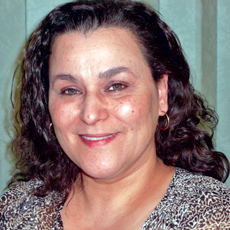
In responding to Eleanor Barbera’s article, “An LTC Shrink’s Mind,” I could not agree more with her. As a full time Director of Therapeutic Recreation and Volunteer Services in a large long-term care facility, unfortunately the good doctor’s opinion, in my opinion, is sadly true.
I always tell my staff that as a recreation therapist, it is our job to see the resident as a person, not the amputee in room 213, or the dementia patient in 301. We should see them as Mr. Jones, or as Mary Smith, and recognize them beyond their diagnosis. In other words, we do not dismiss their personhood. Nor do we dismiss their diagnosis, but we try not to let it define them as an individual.
Sadly, long-term care has regrettably become ICD-M codes, PRI review periods and scores etc. With the way we are on a schedule for MDS filing, you would think we are buying and selling hot stocks. Yes, I am aware that companies are involved in this, and of course that is where the problem lies.
But I also recognize that healthcare is a business, and money has to be generated for the success, growth and viability of the life of the company. We just have to find a better way to do this, in a way that actually factors in the compassion that is so important if we actually want to be the healers and caregivers we profess to be.
In my particular discipline, we have become the equivalent to music and art programs in the school system. We’r seen as “incidental.” When there have to be financial reductions in a school system, officials usually start with cutting music classes or art programs. For many in long-term care, cuts need to be made, or the budget needs to be tightened. Cutting the Recreation Department becomes a no-brainer. I have heard lines such as, “Oh, we could cut staff in that department — they just play all day anyway.”
It can be disenchanting for the very sensitive, but as a 20-year veteran in this field, I have learned to accept that business is business, and for me, I know there is usually no money in altruism and/or altruistic endeavors.
The reason I chose to respond to this article was one of the last lines, which is a recommendation to “involve the entire staff in recreational activities.” That this is so much easier said than done. The goal for me is this: Have the staff ask — after a resident has gone to the toilet, showered and fed — what does he or she get to do the rest of the day? According to a recent AHCA report, the use of psychotropic medications is on the decline, and many facilities have made great strides in reducing falls. That’s often a direct result of therapeutic recreation and activities directors providing residents with outlets.
I am certainly not saying that we as a discipline are doing this single handedly; however, our presence is having a huge positive impact on this issue. I appreciate Dr. Barbera’s opinion very much, and I have to add that the psychologist whom I work with at my facility is of a similar mindset. She makes referrals to us and will call us to discuss a resident, and truly realizes our value. That is invaluable to resident care and employee morale.
Another good resource is The Pioneer Network‘s emphasis on culture change. Environmental factors, coupled with the human factor, should equal an enhanced quality of life for residents — and a better work environment for already overloaded healthcare workers.
Carolyn Perito is the director of activities and recreation at Kings Harbor Multicare Center in Bronx, NY.



